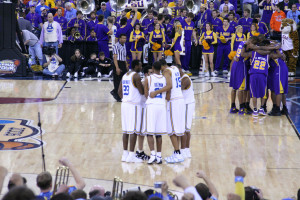2 Tips to Improve your Players On-court Performance Right Now!
At a team’s very core of purpose is their performance on the court. This is very often for many teams how success is measured. Both individually and as a team, the performance of everyone connected to the group very often has an eye for scrutiny passed across it. No matter the desired result, all teams want to improve their performance and so having some tips on how this can be done quickly is very valuable.
One of the activities to implement to improve on court performance of players is to insist on the players Huddle during appropriate opportunities during the game. Huddling itself if not performed well might not be of benefit, especially if there is nothing of worth discussed by the players. The coach must instruct players in who is to be talking and what is to be emphasised during this times of refocusing.

An example of this might be for only the Point Guard to speak initially during the huddle before any player can contribute. The content of the discussion should be around what was highlighted by the coach during the previous end of period or time-out. As players become more experienced and older the discussion can be more directed by the players own analysis of what is happening on court. Coaches however are encouraged to engage with their players as to what was discussed during these team huddles following a game. This will help evaluate and encourage the desired focus during these times.
The second tactic that will instantly improve performance on court is Purposeful Communication during defence. Purposeful communication centres firstly around shifting a players focus from offense to defence. Ever heard the advice “take the game one play at a time” or “live in the moment”? Well by verbally and physically communicating on court it is very hard to focus on anything else but what you are doing right then and there. This is especially important if the previous offensive possession was a poor in outcome.
It is not uncommon for individual players to not be able to shift their focus from poor elements of their performance on court and be unable to continue to focus on just playing in the moment. If these poor performances continue, they can end up weighting heavily on a player mentally and not allowing them to rise above their own negative reinforcement.
The obvious benefit of course from verbal communication is it helps players understand what is happening on court even if they cannot see it. Purposeful communication such as Ball, Help, Shot and Box (Box-out/Rebound) all help players be proactive in their various roles on the floor in defence. This activity triggers players into constantly evaluating what they are doing. When these verbal cues are re-enforced with specific movement patterns in training then the affect can be very profound on an individual player’s performance.
A team’s performance can be very difficult to always rely upon because basketball is a team sport. Each player must play their part to increase the chances of success happening. By incorporating huddling and purposeful communication into your team’s game habits, you will have two valuable strategies for improving performance in a small space of time. Each and every player must take part in these activities for them to give the best possible result to your team’s performance. When worked upon in practice and games these activities can be develop not only team performances but also bonds between players.







Leave a Reply